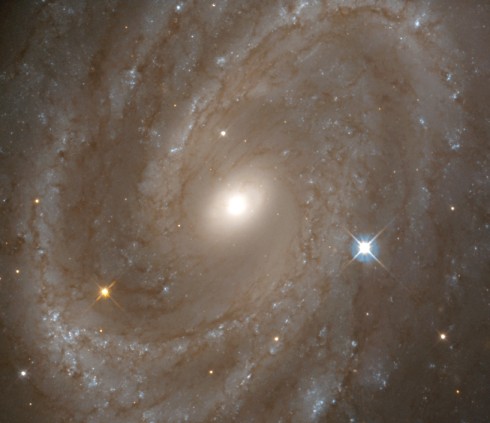Credit & Copyright: Jeffrey Newman (UC Berkeley),
NASA
Explanation:
NGC 4603, a galaxy with majestic spiral arms and intricate dust lanes,
is 108 million light-years away.
Its distance has been accurately measured
by astronomers using one of the fundamental
yardsticks of the
extragalactic distance scale - pulsating
variable stars known as Cepheids.
Though intrinsically very bright,
Cepheids are faint and difficult
to find at such large distances
(the bright "spiky" stars seen above
are foreground objects).
Thanks to the Hubble Space Telescope's sharp vision, more than 36
beckoning Cepheids have been identified in NGC 4603,
now the most distant galaxy in which these stars have been located.
In fact, using the Space Telescope to pick out Cepheids in
galaxies closer than NGC 4603,
the Hubble
Key Project Team has
recently announced the completion
of their 8 year effort to precisely measure galaxy distances and
the expansion rate of the Universe - the Hubble Constant.
Based on their comparison of
galaxy distances and recession speeds,
they report that the Hubble Constant is 70 kilometers per second per
megaparsec to
an accuracy of 10 percent.
This means a galaxy should appear to recede 160,000 miles per hour
faster for every 3.3 million light-year increase in distance away.
Accurately measuring
the Hubble Constant was one of
the major goals for the
Hubble Space Telescope when
it was launched in 1990.
Authors & editors:
Robert Nemiroff
(MTU) &
Jerry Bonnell
(USRA)
NASA Web Site Statements, Warnings,
and Disclaimers
NASA Official: Jay Norris.
Specific
rights apply.
A service of:
LHEA at
NASA /
GSFC
& Michigan Tech. U.
Based on Astronomy Picture
Of the Day
